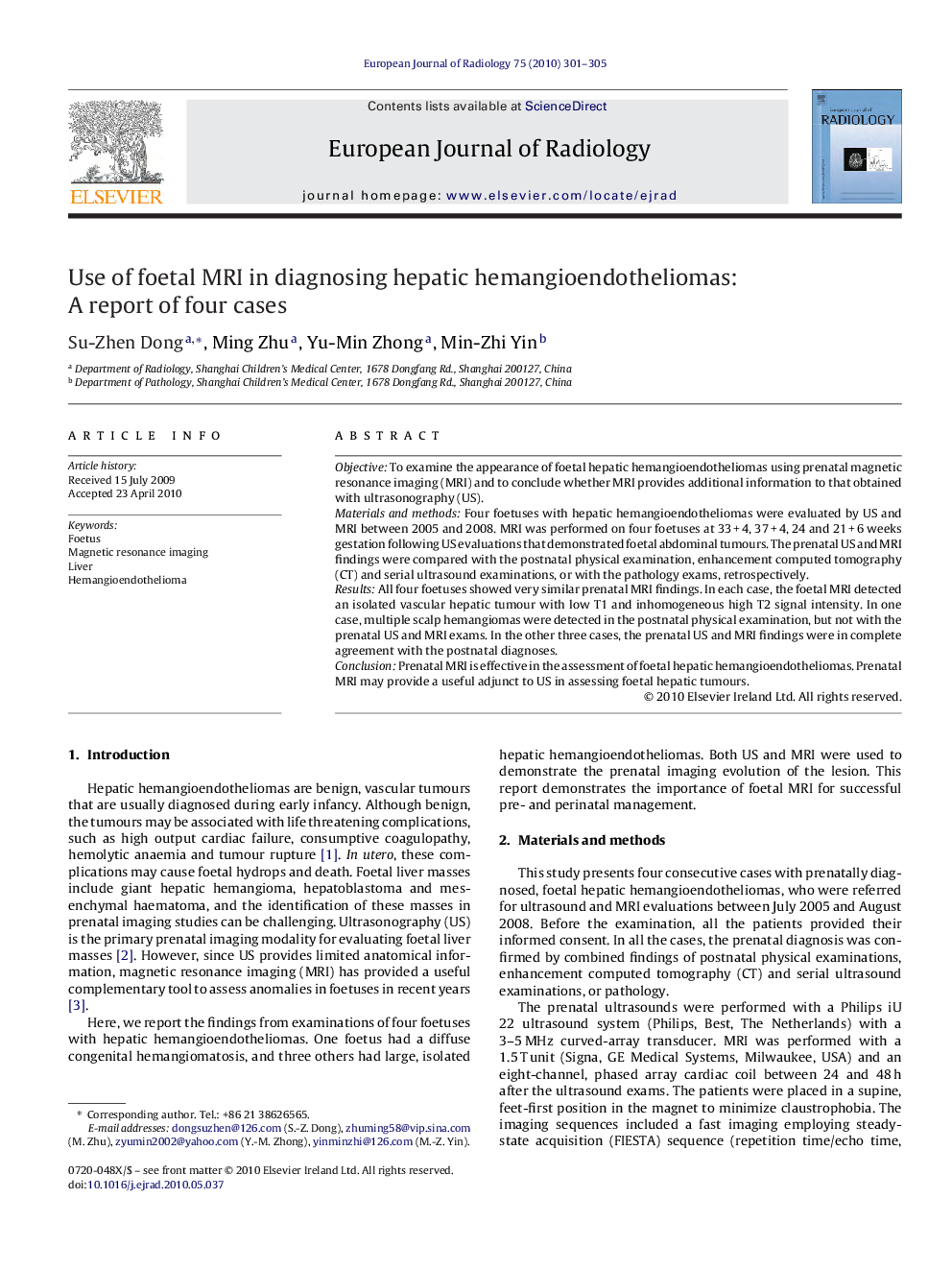| Article ID | Journal | Published Year | Pages | File Type |
|---|---|---|---|---|
| 4226636 | European Journal of Radiology | 2010 | 5 Pages |
ObjectiveTo examine the appearance of foetal hepatic hemangioendotheliomas using prenatal magnetic resonance imaging (MRI) and to conclude whether MRI provides additional information to that obtained with ultrasonography (US).Materials and methodsFour foetuses with hepatic hemangioendotheliomas were evaluated by US and MRI between 2005 and 2008. MRI was performed on four foetuses at 33 + 4, 37 + 4, 24 and 21 + 6 weeks gestation following US evaluations that demonstrated foetal abdominal tumours. The prenatal US and MRI findings were compared with the postnatal physical examination, enhancement computed tomography (CT) and serial ultrasound examinations, or with the pathology exams, retrospectively.ResultsAll four foetuses showed very similar prenatal MRI findings. In each case, the foetal MRI detected an isolated vascular hepatic tumour with low T1 and inhomogeneous high T2 signal intensity. In one case, multiple scalp hemangiomas were detected in the postnatal physical examination, but not with the prenatal US and MRI exams. In the other three cases, the prenatal US and MRI findings were in complete agreement with the postnatal diagnoses.ConclusionPrenatal MRI is effective in the assessment of foetal hepatic hemangioendotheliomas. Prenatal MRI may provide a useful adjunct to US in assessing foetal hepatic tumours.
